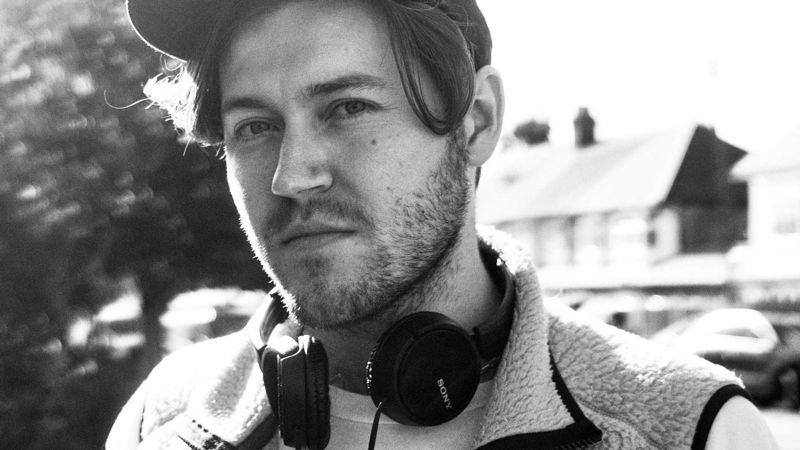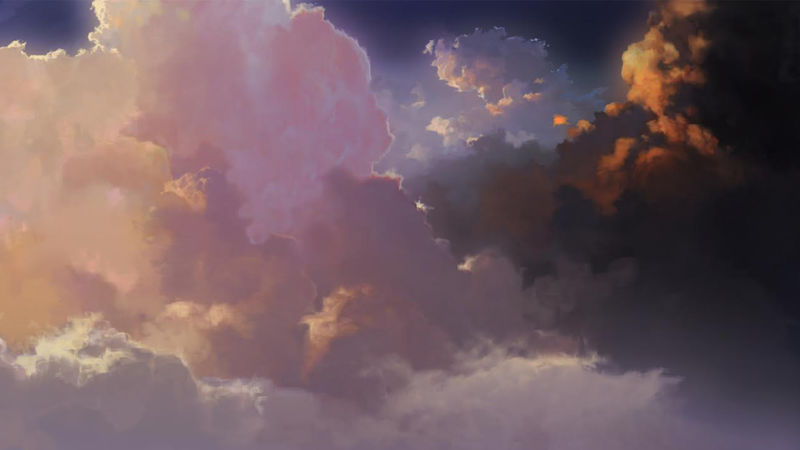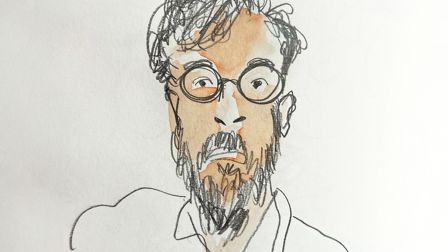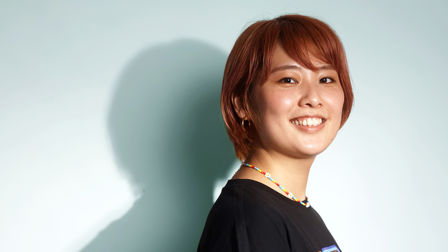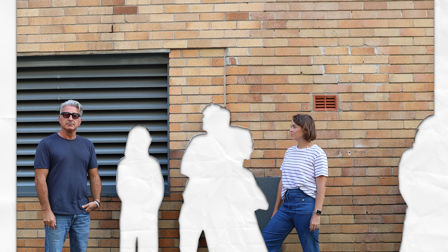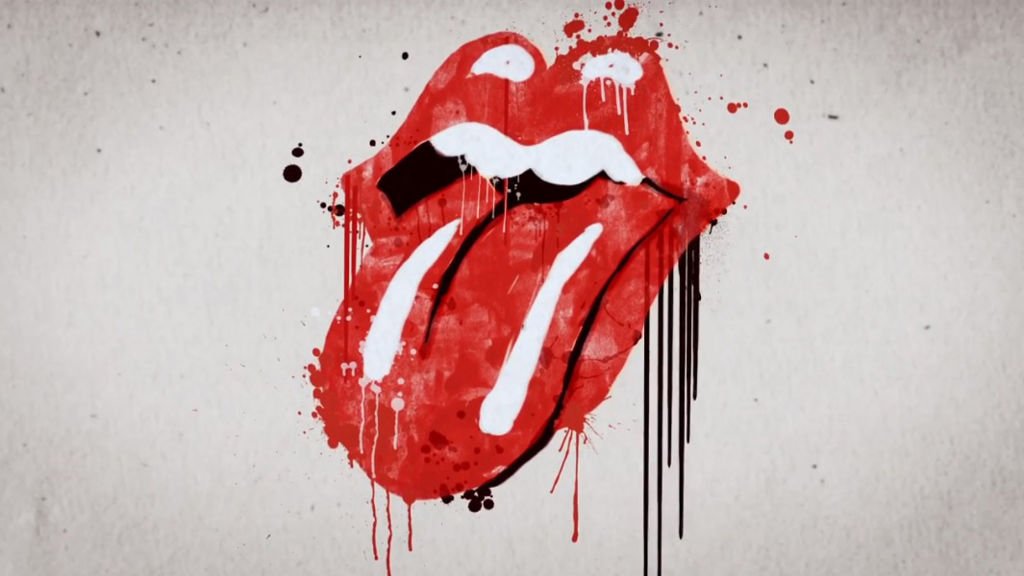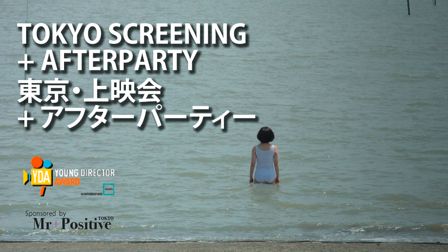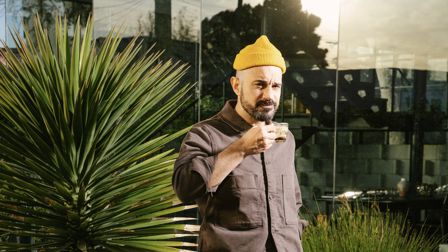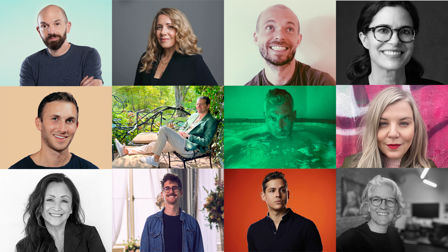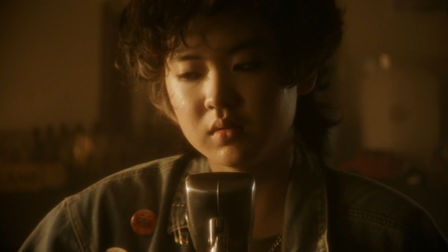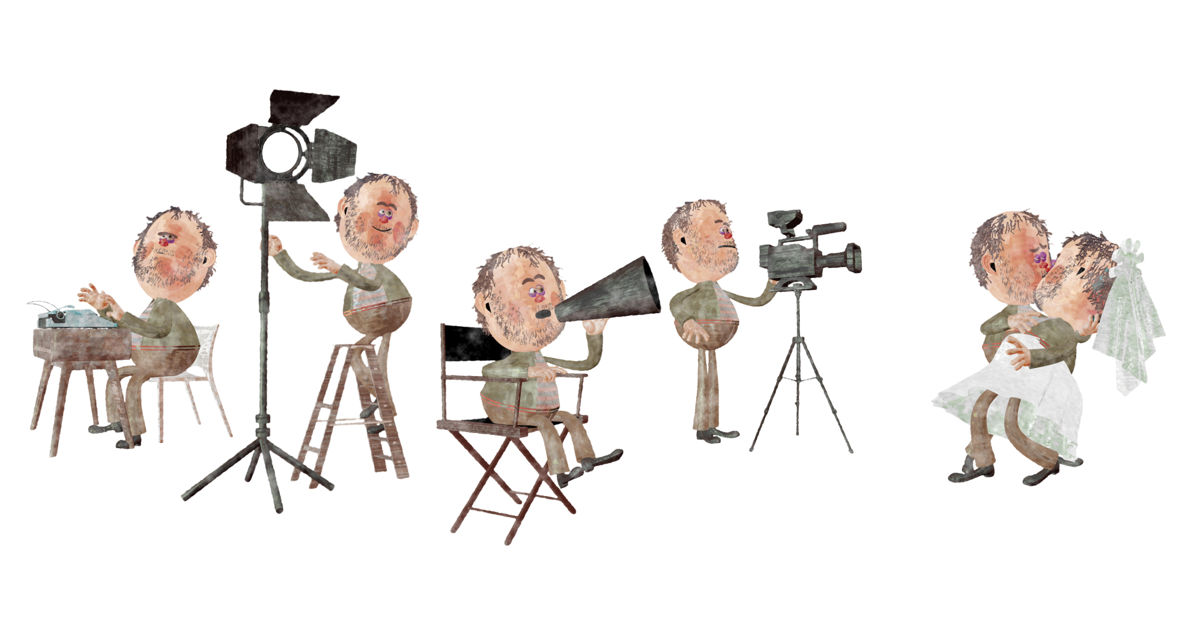Zips, shrubs and Rok'n'roll
Trunk's Rok Predin has brought the Rolling Stones’ lyrics to life, journeyed through paintings and turned Buckingham Palace into a block party. Selena Schleh meets an animation sensation.
As a kid growing up in 1980s Slovenia, then part of Yugoslavia, Rok Predin’s school day would always start with a salute to President Tito. So far, so socialist.
But there was another routine that the Trunk director and animator followed with even greater dedication: every Sunday morning, he and his siblings would gather round an ancient black-and-white TV to watch two hours of cartoons.
“We had all the Western shows, the He-Man’s, the Tom & Jerry’s, that you would be watching in Britain or the States,” recalls Predin. “But at the same time, we were exposed to a lot of state-funded productions from the Eastern bloc - Russia, Poland and the big animation studio in Zagreb, Croatia were all making animated series for children. Western productions were very character-driven: you always knew what was going to happen, the heroes would win. Eastern [European] productions were more loose, story-wise – the emphasis was on the art direction - and it was very hard to predict where the journey was going to end.”
Credits
powered by
-
- Production Company Trunk Animation
- Director Rok Predin
-
-
Unlock full credits and more with a Source + shots membership.
Credits
powered by
- Production Company Trunk Animation
- Director Rok Predin
- Sound Design Fonic
- Producer Richard Barnett
- Sound Designer Barnaby Templer
- Music Sebastian Duh

Credits
powered by
- Production Company Trunk Animation
- Director Rok Predin
- Sound Design Fonic
- Producer Richard Barnett
- Sound Designer Barnaby Templer
- Music Sebastian Duh
It’s this early immersion in two very different worlds, together with a painter’s background (he studied at Ljubljana’s prestigious Academy of Fine Arts) that has shaped Predin’s polymathic gift for animation. Most animators develop a signature style over the years, but, as evidenced by a diverse reel that spans everything from Rolling Stones lyric videos to projection-mapping council flats and their dancing occupants onto Buckingham Palace for the Queen’s Diamond Jubilee concert, Predin isn’t one to be pigeon-holed.
“My style is quite eclectic, it’s all over the place,” he admits. “Which isn’t great if you want to market yourself, but I can’t help myself. I’m very curious about technology and learning new stuff. What I enjoy most about my work is when a client pushes you into an area – either technically or story-wise – that you yourself would never venture into.”
[Animation] is an organic mesh of the two things I love most: music and pictures.
However, with no commercial animation industry to speak of in Slovenia, opportunities to build his reel were limited, so in 2009, Predin moved to London with his then-girlfriend. “We were so naïve,” laughs Predin, “we just packed up our suitcases and arrived in Liverpool Street station without knowing anyone. It was the action of people who had watched too many films.”
Living on toast and lying to landlords while touting for hemp oil commercials was hardly the stuff of movies, though, and as rejection email after rejection email arrived in Predin’s inbox, the situation grew grim. Unable to pay the rent, he was readying himself for a moonlight flit back to Slovenia, when, in a Hollywood-level twist, he got a call from Passion Pictures offering him a stint as an animator/compositor on celebrity reality series The Marriage Ref.

Although the show marked a rare career miss-step for its producer Jerry Seinfeld, it got Predin’s foot in the door of the animation industry. Several ‘odd jobs’ later, he met Trunk’s founders Richard Barnett and Layla Atkinson, who were looking for people to join the team, and the rest is history.
With music in Predin’s blood, it’s no surprise he cites lyric videos for the Rolling Stones’ Doom and Gloom and Wild Horses among his favourite projects. Often dismissed as the promo’s poor relation, lyric videos are “a weird genre,” he muses. “[The artists] don’t want you to do any character animation, so you’re in limbo between motion graphics and a typography piece. Our aim was to make it ‘not boring’”. The video for Wild Horses was anything but: using Andy Warhol’s famous zipper motif, which he built in 3D, to reveal and conceal the words of the song, Predin created a downright sexy piece of animation.
The Rolling Stones – Wild Horses
The Rolling Stones – Doom and Gloom
Within the sparse visual constraints of the genre, colour and font assume huge importance, and even small tweaks can alter the temperature of the song as a whole. “If you have a white word that’s printed on a dark background and you reverse it, it changes the meaning,” he explains. “Or a sentence where all the words are black except one which is red: you have to find the one stressed word which gives context to the rest.” For Predin, such limitations can, paradoxically, be freeing.
At the other end of the musical spectrum was Trunk’s ambitious projection-mapping project for the Queen’s Diamond Jubilee concert in 2012. As British ska act Madness performed their 1982 hit Our House on the roof of Buckingham Palace, the front of the building appeared to open up like a doll’s house, revealing council flats full of folk celebrating the monarch’s anniversary with a right royal knees-up.
“We made a little 3D model of the palace, so we knew roughly where the projectors were going to be,” explains Predin. “You basically do it in virtual space first, that way you know it’s going to be mapped in the right way. But the evening before, we did a test projection and it looked shit, because the dimensions were so huge. The characters were ten metres tall, so all the subtlety was gone. I had to go back and flatten out the colours to make it look nice.” The night itself was “nerve-wracking”, although he admits the nerves would’ve been a lot worse had he realised how many people would be watching the display – an estimated 15 million.
Credits
powered by
-
- Production Company Trunk Animation
- Director Rok Predin
-
-
Unlock full credits and more with a Source + shots membership.
Credits
powered by
- Production Company Trunk Animation
- Director Rok Predin
- Director Layla Atkinson
- Illustration Layla Atkinson
- Illustration Rok Predin
- Producer Richard Barnett

Credits
powered by
- Production Company Trunk Animation
- Director Rok Predin
- Director Layla Atkinson
- Illustration Layla Atkinson
- Illustration Rok Predin
- Producer Richard Barnett
The giant Jubilee party was a world away from the often solitary practice of animation, which, Predin says, “has a weird, almost monk-like quality to it. You have to sift through each frame [and] make sure you animate it properly. You have that alone time. It’s the same as when you’re painting: you have the easel, you’re on your own. But you’re not lonely.”
Predin’s conversation is peppered with references to art, and his painterly roots and grounding in classic draughtsmanship bleeds through in his animation work. Although most is CG, it has a crafted, authentic feel. “You wouldn’t believe how much effort is spent on trying to make computer-generated stuff look organic,” he explains, citing the example of “line boiling” [the wobbly effect of hand-drawn lines].
Animation has a weird, almost monk-like quality to it. You have that alone time. It’s the same as when you’re painting: you have the easel, you’re on your own. But you’re not lonely.
“When you draw something a couple of times, the line is going to be imperfect in places, and every time you photograph that frame, the line is going to be slightly differently drawn. That gives it a certain warmth. Obviously with computers, you don’t need to draw an object for each frame anymore, because the computer interpolates between two extremes of movement, but you still want to introduce some imperfections. And those imperfections themselves are generated by the machine.”
He compares it to the invention of photography. “The guys with the new technology, the photographers, spent a lot of time making their photographs look like paintings. They would arrange the composition and light it as though it was a painting. There’s a similarity to how we [animators] are trying to mimic a different language, using the machine itself.”
Credits
powered by
-
- Production Company Trunk Animation
- Director Rok Predin
-
-
Unlock full credits and more with a Source + shots membership.
Credits
powered by
- Production Company Trunk Animation
- Director Rok Predin
- Music Daniel Pemberton
- Producer Richard Barnett
- VO Jim Carter
- Animator Sam Cundall
- Animator Will Thomas
- Animator Rok Predin
- Animator Seni Soetan
- Sound Design Barnaby Templer
- Sound Design Jake Roberts / (Engineer)

Credits
powered by
- Production Company Trunk Animation
- Director Rok Predin
- Music Daniel Pemberton
- Producer Richard Barnett
- VO Jim Carter
- Animator Sam Cundall
- Animator Will Thomas
- Animator Rok Predin
- Animator Seni Soetan
- Sound Design Barnaby Templer
- Sound Design Jake Roberts / (Engineer)
A good example of this ‘crafted’ approach is one of his earliest short films, One of a Kind. Inspired by a dream, it’s a reverse-evolution story set at a dinner table, which traces Predin’s ancestry through the World Wars, the French revolution, the Viking era and the Stone Age, all the way back to the primordial soup - like a cartoon version of Guinness’ noitulovE.
Despite being created entirely in CG, the film has a lovely artisanal look and feel, achieved through a combination of lighting and organic textures of felt and wood. It was also Predin’s first, self-taught foray into 3D animation. “I’d never rigged a character, I’d never lit anything before,” he explains. “The characters didn’t have bones and joints, I was using deformers to animate them. So there were a lot of imperfections that had to be hidden, either under the table, or from afar.”
I’m always working. It’s like being a painter. You don’t stop being a painter on Friday and pick up again on Monday.
Ten years down the line, Predin still clearly delights in teaching himself new techniques and pushing the boundaries of the digital world. Is technology a creative help or hindrance? He says it’s simply a tool. “You can dig a hole with a shovel, or you can smack someone over the head with it. It’s not the shovel’s fault.”
Credits
powered by
- Agency In-House
- Production Company Trunk Animation
- Director Rok Predin
-
-
Unlock full credits and more with a Source + shots membership.
Credits
powered by
- Agency In-House
- Production Company Trunk Animation
- Director Rok Predin
- Producer Richard Barnett
- Animation Layla Atkinson
- Animation Leslie Dart
- Compositing Rok Predin
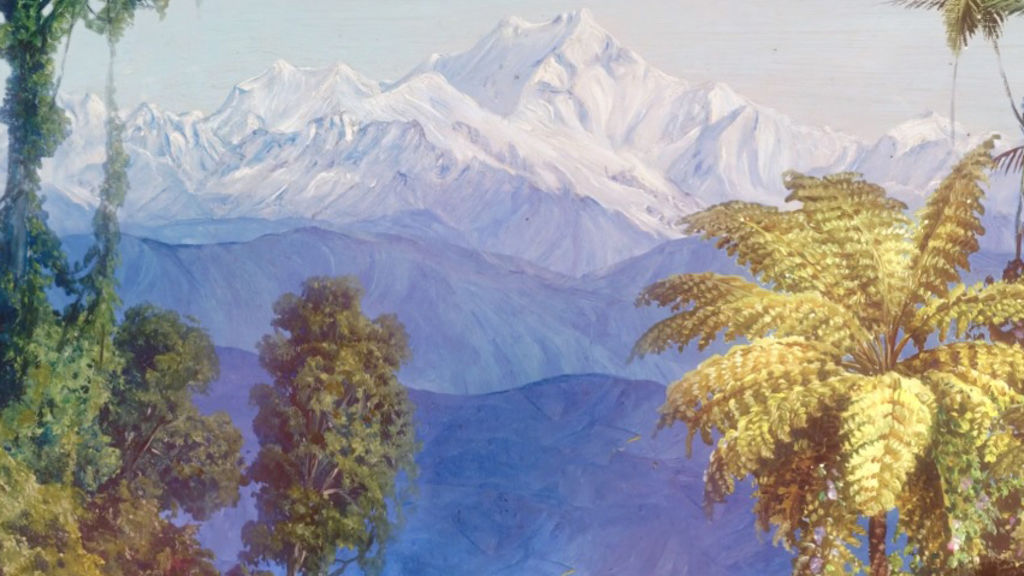
Credits
powered by
- Agency In-House
- Production Company Trunk Animation
- Director Rok Predin
- Producer Richard Barnett
- Animation Layla Atkinson
- Animation Leslie Dart
- Compositing Rok Predin
Tech certainly came in handy for his recent animated film for Kew Botanical Gardens. For International Women’s Day, the client was keen to tell the forgotten story of Marianne North, a pioneering Victorian artist who travelled alone to some of the most inhospitable parts of the globe – the Amazon, the jungles of Borneo, the Australian Outback - capturing flora and fauna on canvas, at a time most women were darning socks or playing parlour games.
“I thought it was an exceptional story,” says Predin. “But how [could we] tell it in such a limited amount of time, using her artwork, which was very important to the client? How do we bring her paintings to life? How do you make them so you can travel through what she saw, experience what she thought was beautiful, where she put down her easel.”
The first task was going through North’s extensive oeuvre – around 800 paintings – and selecting those which best tied the story together. Predin’s team then used a cocktail of Photoshop, After Effects, Cinema 4D and Flash to digitally deconstruct, then reconstruct the artworks.

Above: the Marianne North Gallery at Kew Gardens
“We had about a month of production, once we got sign-off,” recalls Predin. “With each painting, you needed to slice the painting into layers: foreground, middle ground and background. And within those layers, you’d have to slice them even further, in order to get the right depth on it. Once you cut the foreground elements out of the painting, there was nothing behind it, so you’d have to fill in the gaps and paint in the missing areas in North’s personal style.”
Like all good animation, the understated beauty of the final film, voiced by Emilia Fox, belies its complicated production – and in contrast to the many shrill, on-the-nose campaigns for International Women’s Day, serves as a quietly moving tribute to a remarkable woman.
Surely after all that, he’s earned a good rest? No chance, says Predin, who’s currently developing a short film alongside his commercial projects with Trunk. “I’m always working,” he laughs. “It’s like being a painter. You don’t stop being a painter on Friday and pick up again on Monday.”
)
